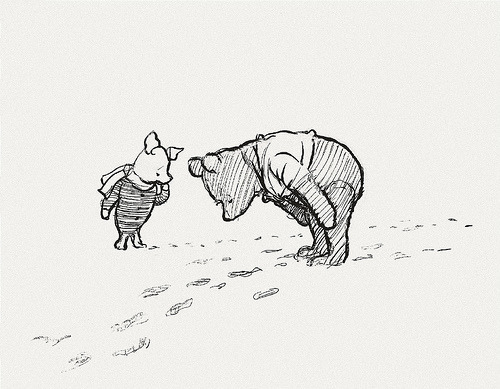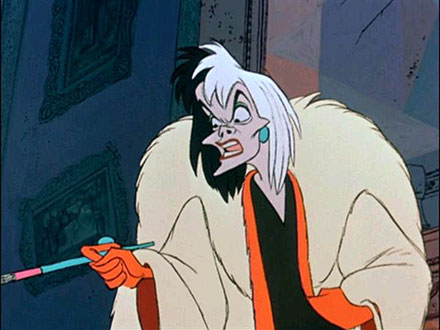On Monday, Nicholas Barber gave me pause for thought, in this Guardian piece, arguing that movie adaptations of childhood classics for young readers like Paddington or Postman Pat, are traducing the spirit of the original in one very specific way.
Villains. Really mean ones at that.
 |
| Mr Curry - the nearest thing in the Paddington books to a baddie |
Barber argues that the icy blast of cruelty, megalomania and high stakes jeopardy which comes whirling onto the screen with these inserted characters is a far remove from the gentle, charming storytelling which made the original books so popular with young children and their parents. He also gives a compelling example of his six year old daughter being squeamish at anything too scary in the movies - from sharks in Finding Nemo to evil queens in Snow White, never mind a psychopathic Nicole Kidman.
He is, of course, absolutely right on two fronts. Those characters are nothing to do with the world of the books. Paddington needs marmalade, not murderers, to bring him to life. And we all know, and quite possibly once were, young children who frighten very easily at any sign of on-screen darkness or scariness - especially, perhaps, if they weren't expecting it in such a warm and honey coloured world. Like finding a Heffalump when you really weren't expecting one....
But at the same time, these are all movies.
The books don't need those extra lashings of evil and drama. But once a book becomes adapted into a film, it becomes something else, not just a different medium but a different genre too. A genre with different rules and demands. A movie, even one for young children, requires big stories and big characters to fill the scree and sustain not only young minds but their adult minders for ninety minutes plus.
And I genuinely feel for his daughter. I remember being terrified by so much - Maleficent turning into a dragon in Sleeping Beauty or the horrific Garthim in Dark Crystal.
 |
| Gruesome Garthim |
Somehow I seem to have survived it all, though, bar the odd nightmare. I think the key to these villains is that they are often as comic as they are villainous. Moreover, they can often be safely filed under the category of 'genre archetype' - even if unconsciously. Unlike the recent 'Missy' on Doctor Who - who I thought was brilliant but disturbingly vicious for a family show - evil queens, mad scientists, corrupt developers, emotionless robots - these caricatured characters have their roots in often quite non-scary cartoons and comics rather than any real life basis. (Ironically, the irritable next door neighbour as typified by Mr. Curry from the Paddington books is far more likely to be a real life concern for young children.)
I don't think your average child has met enough crazy taxidermists to be truly checking under the bed for them, and witches and wizards really can be safely banished to fairytale land. In fact, these comic book denizens are by and large safe ways to introduce young children to flashes of the dark side of human nature, without creating undue anxiety or fear.
They almost all meet grizzly and overblown ends too, which is part of the panto fun.
Barber is right that not every child's narrative needs these big bullies, certainly not every book or TV programme. Children's stories may be one of the best ways to address grief and pain for developing minds; that of course doesn't make them obliged to.
But to keep small ones focused and not wriggly in the cinema, I can think of few better ways than a larger than life baddie with arched eyebrows and a maniacal laugh, coming after the young and innocent hero of the hour.
Piers "Cruella de" Torday
@PiersTorday
www.pierstorday.co.uk




5 comments:
I think I disagree, mostly.
I take the point that movies come with different conventions, and that canny makers of children's movies will also keep their adult companions in mind. That's right and proper.
However, not all movies are Hollywood blockbusters with bwaahaahaa villains - and that's a very Procrustean template onto which to fit all children's stories. Nor do all adults find villains concocted for the purpose of providing villainy (or, like the Paddington taxidermist, simply stolen from 101 Dalmatians) very interesting. Are we really saying that adults are less sophisticated than children and can only be entertained with explosions and moral primary colours?
To be honest, I think this is less often a case of people adapting books with the audience and the demands of the medium in mind, and more one of lazily applying a formula about "what sells", something they are happy to do because they don't really have any respect for the source material in the first place.
I wonder if the problem is the age at which children tend to really watch films. Any parent who takes a wriggling 5 year old to a cinema needs their head examined (although I do see a few forced to in order to take the older children, and then they just have to pacify with sweets and whispered threats all through the film). Paddington and Postman Pat are gentle pre-school stories that simply don't offer enough excitement for a 7-9 year old who is the sort of age to want to go and see a 'family' film - hence the manufactured villain. I agree, Cathy, it's a lazy solution - but I think it's because they are trying to capture an audience who is faintly nostalgic about their former TV loves (plus parents very nostalgic about their children's innocent pre-school selves), but who are too old to want to really see them in the original style.
Perhaps it's also something to do with current fashion, or a sign of the times. Maybe the pendulum will swing back at some point and a new 'charming', gentle film will become a blockbuster, to everyone's surprise. I like to think so.
I think it's significant that they don't do this with adult classics, though. Jane Austen and Zombies may have been a niche hit in print, but adaptations of her work don't generally introduce characters who are trying to take over the world, get super-powers, etc., to "make it interesting."
Thanks for the comments, all. I think C.J. has it right but I also completely take the point that there should always be a place for a gentler, less contrived and formulaic story telling, there is so much pleasure and more that can be gained from that. I haven't seen 'Paddington', it might be terrible, it might be brilliant (admission: I loved the trailer). What I will be looking out for, though, is the charm, invention and skill with which the bwaahaahaa villain insertion is delivered - that's the merit for me on which it should be judged.
Post a Comment